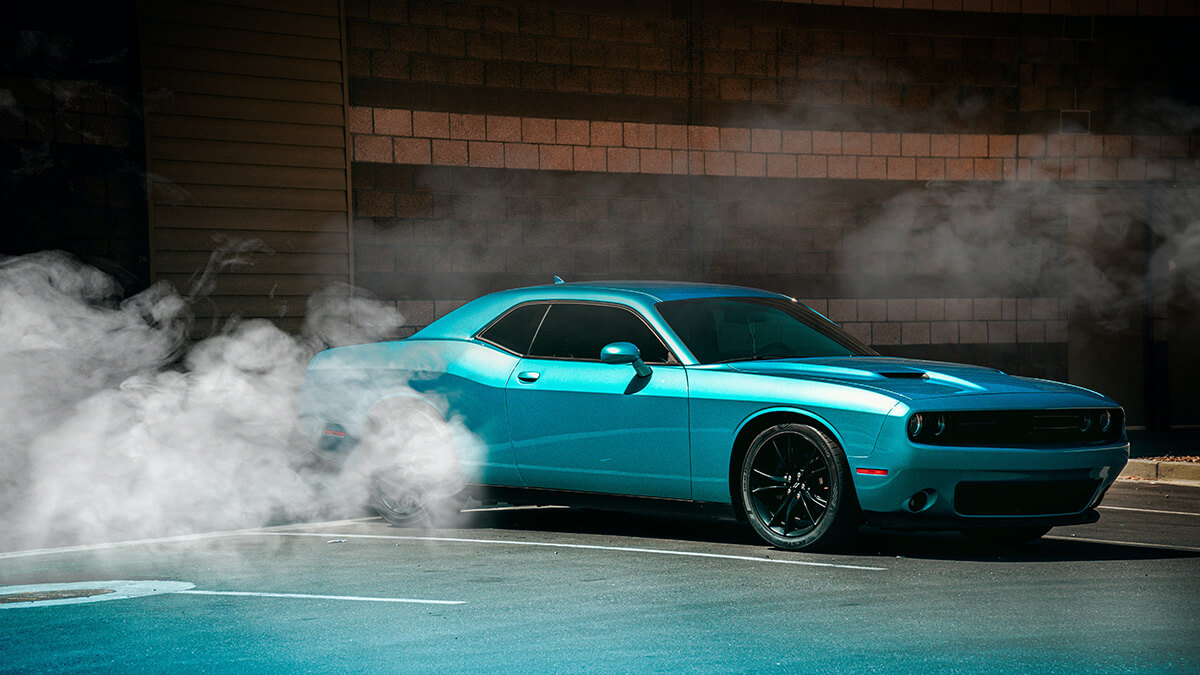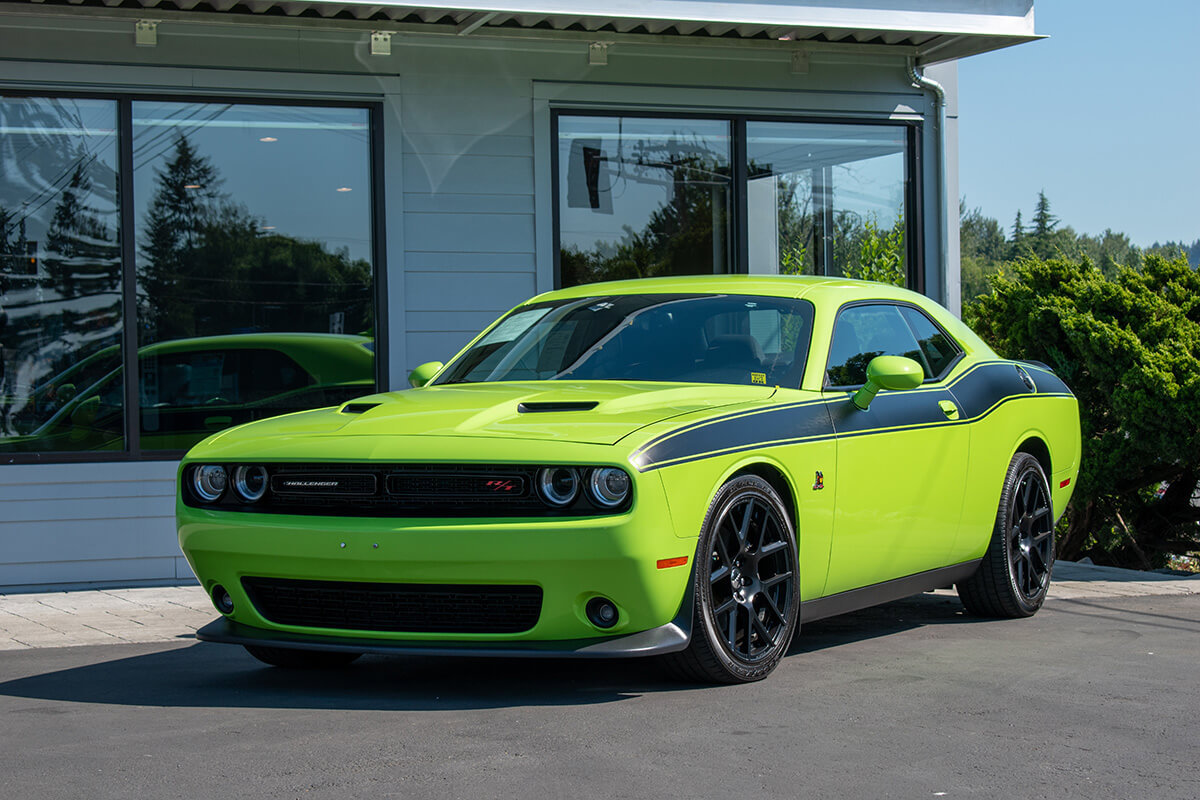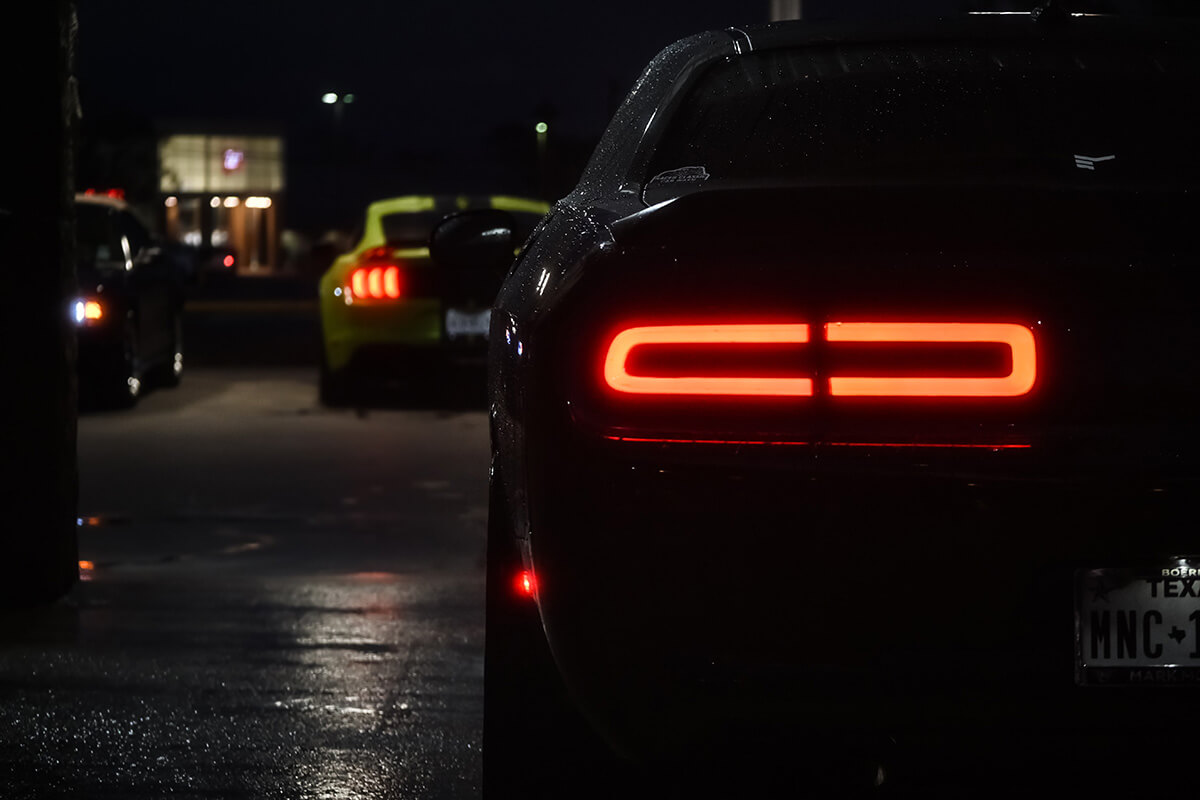Dodge Challenger Mods, Performance Upgrades & Gallery
A famous pony car, the Dodge Challenger can’t boast a very long production run, but it has definitely left his trace in history and hearts of automotive enthusiasts already, especially in the US. The model underwent three generations and the latter, the most successful one, is still in production today. Most of its lifespan, the Challenger was a potent pony car, but in the late 1970s and early 1980s, the car was marketed as a compact car for 5 years as a rebadged version of the Mitsubishi Galant Lambda. In 2008, the vehicle was revived in its more recognizable and popular iteration and now continues its glorious way.
The original version left the assembly line back in fall 1969. A classic pony car of that time, the Dodge Challenger was positioned as a competitor to upmarket pony cars – the Pontiac Firebird and Mercury Cougar. It shared the platform with the Plymouth Barracuda, but was a bit larger than its sibling, came with a more luxurious interior, offered more features, and was more expensive. The range of engines was solid, differing from a 3.2 L I6 up to 7.2 L V8, while the list of transmissions included only 3-speed manual and automatic and 4-speed manual options. Only 2-door body styles were offered – coupe, hardtop and convertible. Apart from the starting model year, production numbers weren’t very high and the model was discontinued after the 1974 model year. Because of this and the fact that even fewer units have survived to these days, prices of original models are high today.
There also was a range of special versions made, such as the Deputy, later succeeded by the Coupe – the entry-level model offered only as a coupe that featured fixed side glass and quarter windows in the rear, basic steering wheel and lack of some features offered by the original base grade. The R/T (short for Road/Track) variant was performance oriented, coming with a shaker hood scoop, special Rallye instrument cluster and range-topping engines. Another special version was the T/A – named after the Trans Am series, it was a street version of an actual racing car. The model utilized a destroked version of the same engine, air scoop, fiberglass hood, front disc brakes, certain heavy-duty components, special Rallye suspension, and a range of other upgrades.
Despite bearing the same nameplate, the second-generation Challenger had almost nothing in common with the original model. It was a subcompact car that offered two I4 power units generating either 77 hp or 105 hp. One of a few if not the only similarity was frameless hardtop styling that reminds the one of the first-gen model. The car was marketed up to 1983, for 5 model years only.
The current, third-generation Challenger was launched in 2008 for the same model year. A potent pony car just like the first version, it features numerous adapted design cues of the latter (especially R/T variant) even though is taller and longer and offers significantly more space for rear passengers. The vehicle employs robust V6 and V8 power mills with impressive outputs. Most transmission options are automatic with only one 6-speed manual unit available. Today, the car is still in production with more than 673 thousand units sold worldwide.
Of course, there are special versions of such a great and famous car. Apart from anniversary editions and variants featuring mostly visual upgrades, two models are worth special mentioning – the SRT Hellcat and SRT Demon. The Hellcat comes with a 6.2 L Hemi V8 with a supercharger that is capable of delivering outstanding 707 hp, 20” aluminum wheels, two key fobs, 4-piston rear brakes by Brembo, and other upgrades. It can reach 60 mph in 3.6 seconds and 125 mph in 11.6 seconds with the maximum speed being 199 mph. The SRT Demon is an even further upgraded version of the Hellcat – equipped with the same power unit, it also features a 2.7 L supercharger and delivers up to 840 hp and 770 lb-ft (with 100 octane fuel). It is 215 lb lighter than the Hellcat and rides on drag radial road tires, also using a transbrake system specially designed for drag racing. The model accelerates to 30 mph in just 1 second and to 60 mph in 2.3 seconds – the best result for a non-electric car. A 100-mph mark can be reached in 5.1 seconds, but the top speed is factory limited to 168 mph.
Why modify your Dodge Challenger?
Whatever version of the Dodge Challenger you own, it surely delivers at least solid performance and looks excellent from the factory. But there is always room for improvement – either to push performance even further, add some personal touch or increase the level of comfort. Especially, if you own some rare version, you can make it totally unique. Three main types of modifications are performance, exterior and interior upgrades. As the name implies, performance ones will help you push your Challenger to the limits, exterior mods will make it look special, while exterior upgrades will add comfort and convenience to your regular driving.
What are performance mods / Common Performance mods
Simply speaking, performance modifications are aimed to make your car faster or more powerful. They mainly include engine tuning but can also affect other systems of your Challenger. Today, the range of upgrades you can do is virtually countless, from almost invisible from the outside performance chips up to installing a more robust turbo or supercharger. You can make your vehicle run faster, deliver more revs, respond faster and more accurately, sound louder, and much more. The range of mods is huge, but take a look at some of the most common ones.
Air intakes
Air intakes provide the air into the power unit of your Challenger being a kind of breathing strips for it. OEM units are designed to allow the engine “breath” freely and effortlessly in regular conditions, while aftermarket systems improve the flow of cold air into the engine that makes a combustion process more complete, leading to a longer lifespan of the motor and slight increase in power output. A quite straight modification, it can also improve efficiency of the vehicle along with steering response. Compared to other engine upgrades, installing aftermarket air intakes is a more budget-friendly way of upgrade and it will still make a notable difference.
Turbocharger/superchargers
In case you want some solid power enhancement, take a look at intercoolers – turbochargers and superchargers. They will increase performance of your four-wheeled friend significantly, but both installing such a unit or upgrading your existing one will lead to some serious expenses. On the other hand, spending several thousands of dollars you will get significantly higher power output – the difference can reach about 200 hp and even more. Be sure to get high-quality components and deal with only experienced mechanics to not only get better results but also prevent severe damage to the engine of your car.
Performance Exhausts
Upgrading the exhaust, you’ll kill two birds with one stone. First of all, the sound of your Challenger will be significantly better coming to a whole new level. Plus, thanks to different bends, gas will be better removed from the system resulting in lower backpressure and hence better performance. There are both separate components and complete systems available on the market today, to meet the needs of all sorts of enthusiasts. The installation process won’t take much time, especially if you get your car to a specialized service station – if you’re a little lucky, you can enjoy the new sound of your Challenger even the same day you got the new exhaust.
Performance tuners/chips
Current-time vehicles depend on computer systems more than even before. It not only makes driving easier and more comfortable, but also provides an opportunity to upgrade your vehicle in one more way. Usually, these systems are intended to deliver a compromise between efficiency and performance. Though, you can install an aftermarket performance chip aka tuner that will change certain parameters of your car’s ECU and unleash its hidden potential. Of course, it is quite a serious change, so it is recommended that you talk with experienced specialists and get your vehicle to only trusted stations. Besides, the price of the chips is not that high as the one of the intercoolers, but the difference will also be noticeable.
What are exterior mods / Common Exterior mods
Of course, clothes do not make the man, but if your car will not only perform excellently but also look excellently, it will impress much more. Whichever version of the Challenger you own, you can make it even more aggressive, stylish, sporty, and personal. Luckily, the range of variants for exterior tuning is countless – spoilers, head and tail lights, hoods, fenders, wheels and rims, complete body kits, etc. The number of material and color options can blow your mind just like your pride and joy will do when you finish your job and take it to the streets. Take a look at some of the most common mods.
Custom LED lights
Lighting is crucial for your safe driving, because it helps your vehicle stay visible in dark and during bad weather conditions. At the same time, thanks to the latest technology and incredibly wide range of aftermarket units available, installing custom set of lights is a great way to add some personality to your four-wheeled friend, make it more stylish and attractive. At the same time, you will increase your safety, as LED lights are brighter than halogen or other types of bulbs installed on vehicles from the factory. In addition, their lifespan is much longer and energy consumption is drastically lower too. Options of headlights and taillights are virtually countless, but you can also install some addictions like halo rings to your existing assembly without replacing it.
Body kits
Whether you’re planning a complete makeover or just want to change certain body parts, today getting the job done is easy like a breeze. Numerous bumpers, hoods, diffusers, widebody fenders, spoilers, are offered for your choice. Made from high-grade materials, they will deliver many years of reliable service making your vehicle turn heads for years to come. Some high-end body kits and their components are made of carbon fiber combining very light weight and excellent reliability. This material also looks awesome by itself, so you’re not even have to color the part or kit to get an attractive look.




